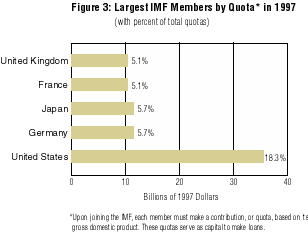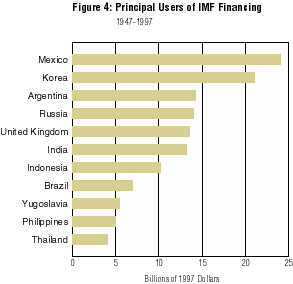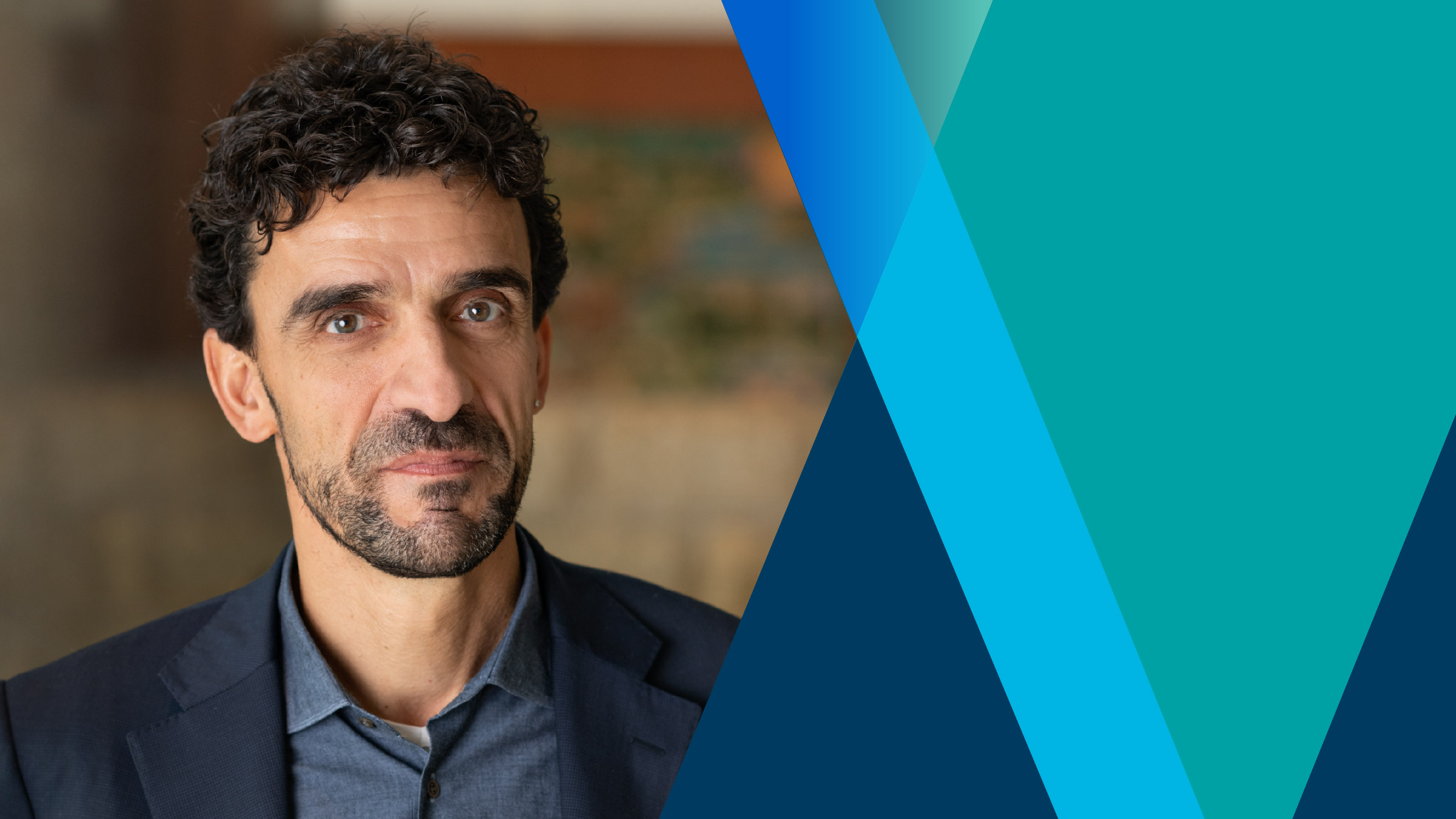The IMF has roughly 2,600 employees. Their principal day-to-day business is to conduct surveillance of the policies of the members, consult periodically with them about their policy, make technical assistance available to members, to collect and disseminate a wide variety of statistics on the members' economies and to make loans to members.
The most important function of the IMF is to make loans that are financed by members as follows. On joining the IMF, each member country must make a specified contribution, called a quota. At most, 75 percent of the quota can be in the money of the member country while the rest must be in readily marketable securities and currency or gold. The size of this quota is determined essentially by a country's gross domestic product. Figure 3 gives the quotas of the largest five members. The quotas contributed by the members serve as the capital that enables the IMF to make loans to member countries.

The IMF lends money only to member countries with balance of payment problems. It allows the member to borrow funds temporarily to pay for balance of payments deficits with the expectation that the country will alter its policy so as to reduce its balance of payments deficit. A member borrows from the fund by using its own currency to purchase from the fund other currencies or Special Drawing Rights (which are essentially claims to a weighted average of eight major countries' currencies). The loan is repaid when the member repurchases its own currency. A member country can unilaterally withdraw the 25 percent of its quota that is paid for with readily marketable assets. To borrow more than 25 percent the member country makes a request to the executive directors, who represent the entire membership. Figure 4 gives the amount borrowed by major users. As the figure shows less-developed countries have been the predominant borrowers from the IMF, with the exception of the United Kingdom which borrowed substantial amounts in the 1960s.

Originally, under the Basic Credit Facility, they could borrow up to 125 percent of their quotas. Later a variety of special facilities were added to allow members to borrow substantially larger amounts. Along with the request for a loan the potential borrower presents to the IMF a plan for reform to reduce the payments problem. This plan of reform stipulates various conditions for reasonable progress in reform. Typically, these conditions include tightening of monetary policy, raising tax revenues, lowering government spending and other measures to deal with weaknesses in the economy that underlie the payments problem. If the plan for reform meets the executive directors' approval, the loan is disbursed in installments which are tied to the member's successful progress in meeting the conditions stipulated in the reform plan. Requests for larger loans are typically accompanied by reform plans with more stringent conditions. Currently, borrowers pay a one-time fee of 0.25 percent of the amount borrowed and annual interest charges of about 4.5 percent, while the rate paid to lending countries is roughly 4 percent per annum.
The business of the IMF is conducted by the Executive Board. At present eight executive directors represent individual countries: China, France, Germany, Japan, Russia, Saudi Arabia, the United Kingdom and the United States. The other 16 directors each represent groups of individual countries. The voting power of each director is determined by the quotas of the countries represented by that director. Depending on the specific issue, approval requires anywhere from a simple majority to four-fifths of the vote.
Return to: Asking the Right Questions About the IMF




